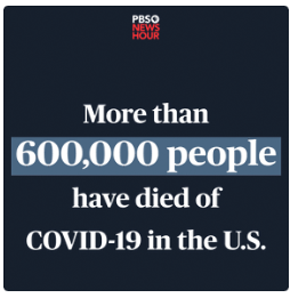Health Plan Weekly
-
House Republicans’ Budget Resolution Floats Deep Medicaid Cuts
House Republicans released a 2025 budget resolution on Feb. 12 calling for deep Medicaid funding cuts that could impact millions of people. While the Association for Community Affiliated Plans (ACAP) and other advocacy groups warn of major disruptions to Medicaid, Wall Street analysts indicated they are uncertain whether the proposals will pass because of the program’s popularity among voters.
As Republicans look for ways to pay for President Donald Trump’s proposed tax cuts, their budget resolution calls for the House Energy and Commerce Committee to cut federal spending by at least $880 billion from fiscal years 2025 through 2034, a large portion of which could come from Medicaid. The Energy and Commerce Committee oversees Medicaid, which covers more than 79 million Americans, per KFF.

-
CVS Beats 4Q Wall Street Estimates as Aetna Business Stabilizes
After a tumultuous several months that culminated in the ouster of former CEO Karen Lynch, CVS Health Corp.’s fourth-quarter 2024 results beat Wall Street consensus estimates. And while the company reported lower year-over-year operating income, executives said the struggling Aetna business is finally stabilizing.
The company’s adjusted earnings per share (EPS) for the fourth quarter came to $1.91, well above the consensus of 91 cents. Medical loss ratio (MLR) was 94.8%, which was lower (better) than the 95.5% guidance. And CVS posted revenue of $97.7 billion, beating the $97.1 billion consensus.

-
Humana Posts Net Loss for 4Q, Expects EPS to Increase in 2025
While Humana Inc. posted a net loss in the fourth quarter of 2024 as it continued to adapt to a changing Medicare Advantage landscape, the company’s earnings released on Feb. 11 slightly exceeded analysts' expectations. The insurer stopped offering MA plans in some unprofitable markets this year, leading to a decline in membership but also contributing to Humana’s confidence it will reach its guidance for 2025.
Humana had an adjusted earnings per share (EPS) loss of $2.16 for the fourth quarter, better than the consensus estimate of a $2.23 loss, while the company’s $29.2 billion in quarterly revenue was above the $28.8 billion consensus. The company’s consolidated medical loss ratio (MLR) was 91.3%, slightly above (worse than) the 91% consensus.

-
News Briefs: Health Care Trade Groups Voice Optimism as RFK Jr. Is Confirmed
The Senate confirmed Robert F. Kennedy Jr. as HHS secretary on Feb. 13. The longtime vaccine critic was elevated to the high-profile health care office after assuaging the concerns of key Senate Health, Education, Labor, and Pensions (HELP) Committee member Sen. Bill Cassidy, M.D., (R-La.). Health care trade association reactions have been optimistic, with most indicating they are eager to work with Kennedy on various issues, such as PBM reform and population health. “Small business-owned pharmacies are disappearing, and pharmacy deserts are forming, because of the business practices of Big Insurance and their PBM subsidiaries, and we very much hope Kennedy and the Trump administration will support our effort to rein in these bad actors,” said National Community Pharmacists Association CEO Douglas Hoey. Said Association for Community Affiliated Plans CEO Margaret Murray: “Opportunities abound to bring improvements to our nation’s system for health coverage and care — many of which will require outside-the-box thinking. We look forward to working with Secretary Kennedy and his team to tackle the pressing issues of access to coverage and care, disease prevention, and public health improvement.” And Pharmaceutical Research and Manufacturers of America CEO Stephen J. Ubl said, “During his confirmation hearings, Secretary Kennedy discussed the need to reduce the burden of chronic disease, improve health outcomes and make health care more affordable for the American people. Our industry is eager to work with the Trump administration to help address these urgent priorities.”

-
Medical-Cost Surprise Dings Molina’s Fourth-Quarter Results
Molina Healthcare, Inc.’s fourth-quarter results came in below the company’s and analysts’ expectations, driven by higher-than-anticipated care utilization among its members. The insurer also disclosed that it anticipates the trend to continue this year, a surprise to investors.
For the fourth quarter, Molina reported adjusted earnings per share (EPS) of $5.05, well below the $5.87 Wall Street consensus estimate. The insurer also had a 90.2% medical loss ratio (MLR), higher (or worse than) the 88.7% consensus.












